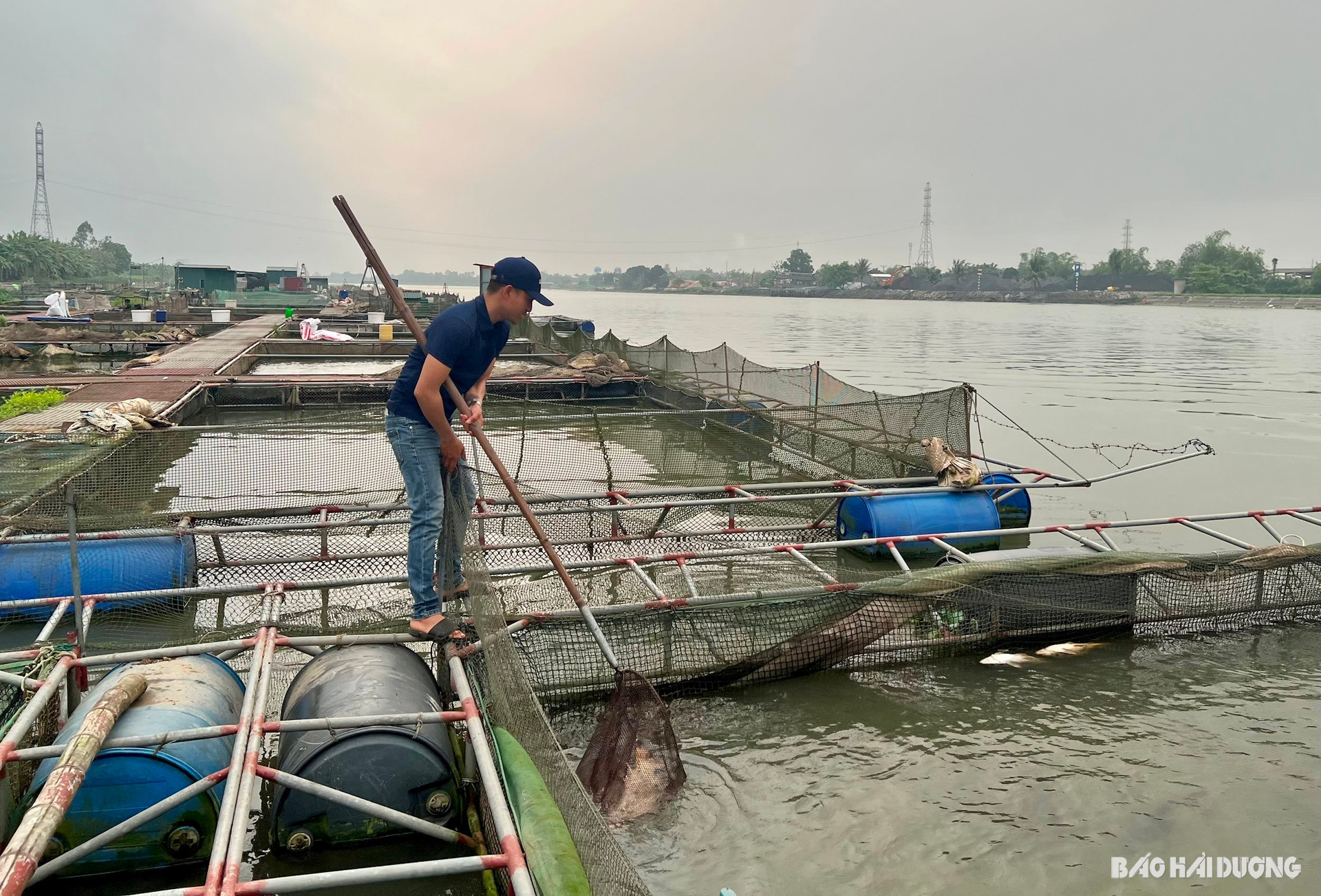In response to the recent fish deaths at some cage farming sites on the river, the Department of Agriculture and Rural Development of Hai Duong has recommended some appropriate care measures for cage fish farmers.

In recent days, in Hai Duong province, there have been fish deaths at some cage farms. According to forecasts from specialized agencies under the Ministries of Natural Resources and Environment and Agriculture and Rural Development, in the coming time, the average temperature will tend to be higher than the average of many years, and there will be many hot spells and severe heat waves. Rain and floods are unlikely to come early, and the flow may be lower than the average of many years, affecting the water source for fish farming in Hai Duong.
To proactively respond promptly and limit damage in aquaculture, the Department of Agriculture and Rural Development recommends that agencies, units and localities focus on implementing a number of measures.
For fish raised in river cages, it is necessary to closely monitor weather forecasts to respond. During the changing seasons, when the weather changes suddenly, it is necessary to regularly observe the water in the farming area and the fish. When the water is cloudy, the fish eat less or swim slowly, and jump to the surface, it is necessary to take timely measures, increase oxygen and stir the water.
When the water level in the river decreases, it is necessary to lower the cages to ensure the depth is always between 2.5-3 m to reduce the impact of high temperatures and disinfect to prevent disease.
Harvest fish when they reach the right size and weight. Avoid catching, thinning, transporting, and releasing fish on hot days and during hot times of the day.
Regularly clean and ventilate the cages to circulate inside and outside the cages, to increase dissolved oxygen in the water, reduce dirt and debris in the cages.
Feed fish in the early morning and cool afternoon for the most effective feeding. Increase fish resistance by adding vitamins, minerals, digestive enzymes, essential oils, etc. to fish food at the dosage recommended by the manufacturer.
When the water temperature is above 35 degrees Celsius, reduce the amount of food to 1/3 of normal. Prepare enough fuel, materials, machinery, and equipment for prevention and overcoming consequences such as nets, barriers, bamboo poles, generators, water fan motors, aerators, lime, boats, life buoys, etc.
For fish raised in ponds, maintain the water level in the pond at least 1.5 m to limit fluctuations in temperature and pH of the water in the pond. Carefully check the quality of the water source before taking it into the pond. Do not take polluted water sources that do not ensure quality.
Limit fishing, thinning, transporting, and releasing fish on hot days and during hot times of the day. Fishing and transporting fish must be done early in the morning on cool days.
When there is a phenomenon of fish floating their heads due to lack of oxygen at night and early morning, it is necessary to use water pumps and water fans at night, especially from 10pm to 4am the next morning to increase the dissolved oxygen content in the pond.
Feed fish in the early morning and cool afternoon, add vitamins to the food to increase the fish's resistance. Use biological products weekly to treat the pond environment, increase the growth of beneficial microorganisms, limit harmful organisms and help promote the decomposition of organic compounds and release toxic gases in the pond.
Currently, Hai Duong province has more than 12,000 hectares of aquaculture. Of which, there are 214 concentrated aquaculture areas with a scale of 5 hectares or more with an area of nearly 5,000 hectares. 90% of the province's aquaculture area is in the form of intensive and semi-intensive farming. The province has nearly 7,400 fish cages on the outer rivers, concentrated in Hai Duong city, Chi Linh and Nam Sach, Tu Ky, Thanh Ha districts...
PV